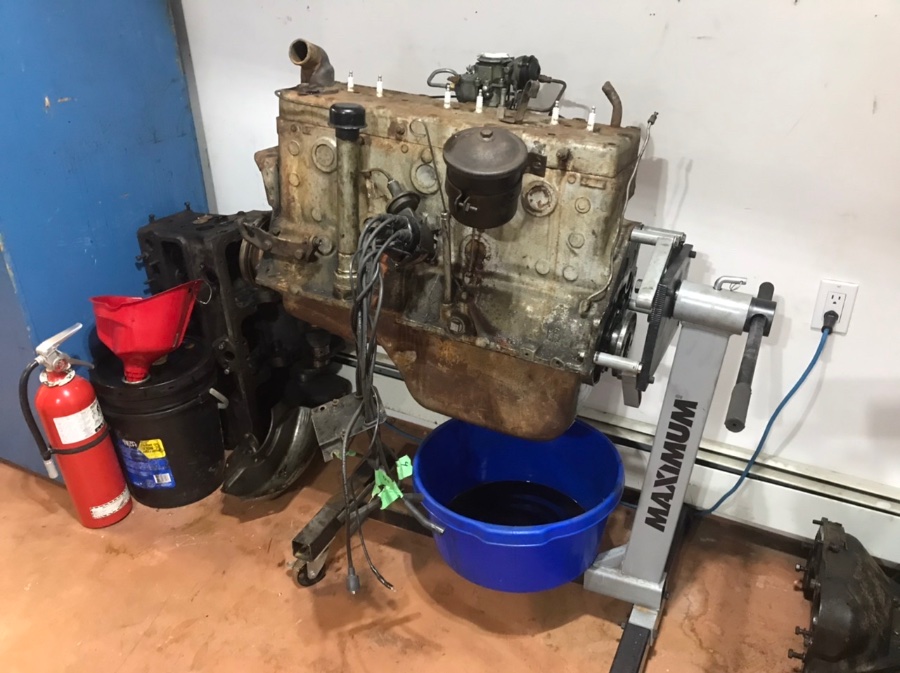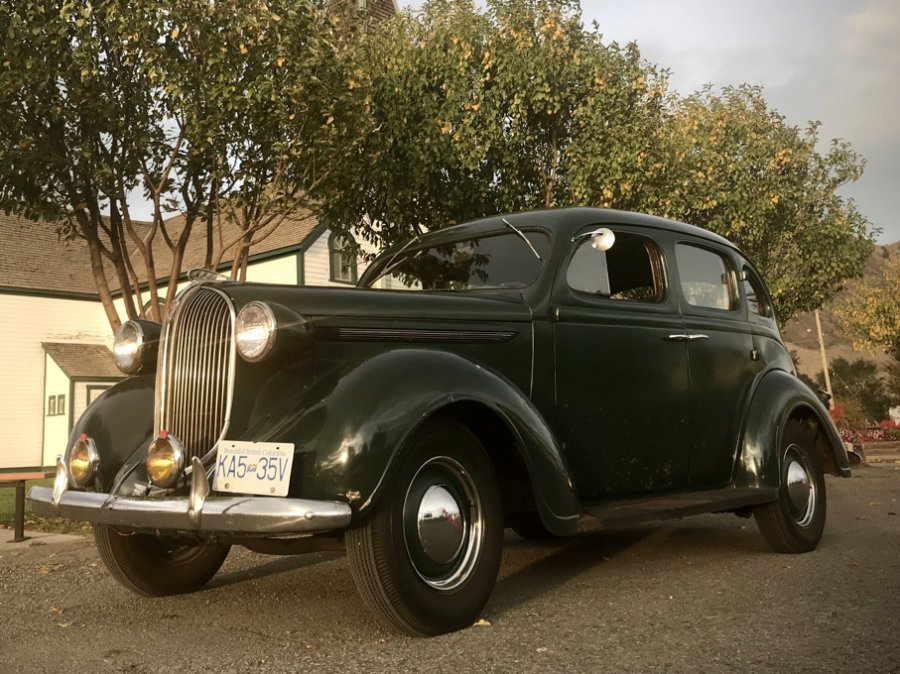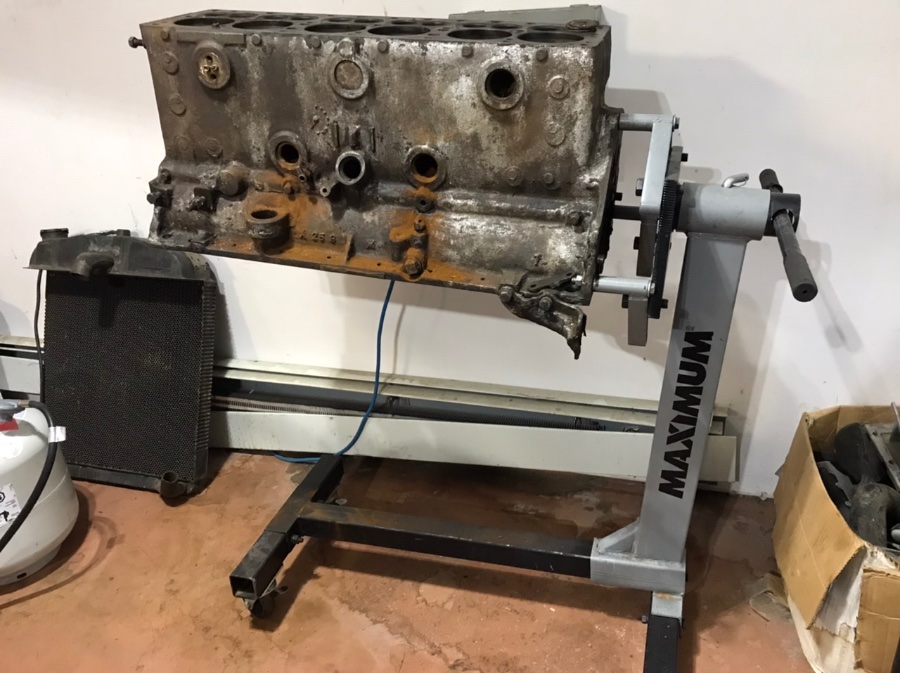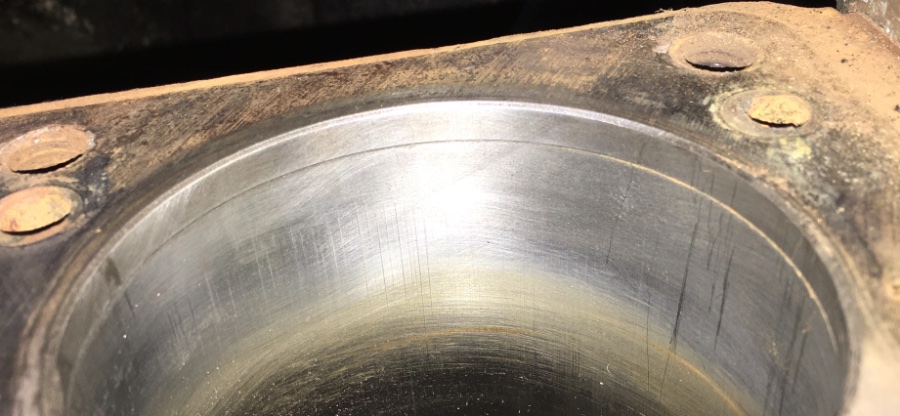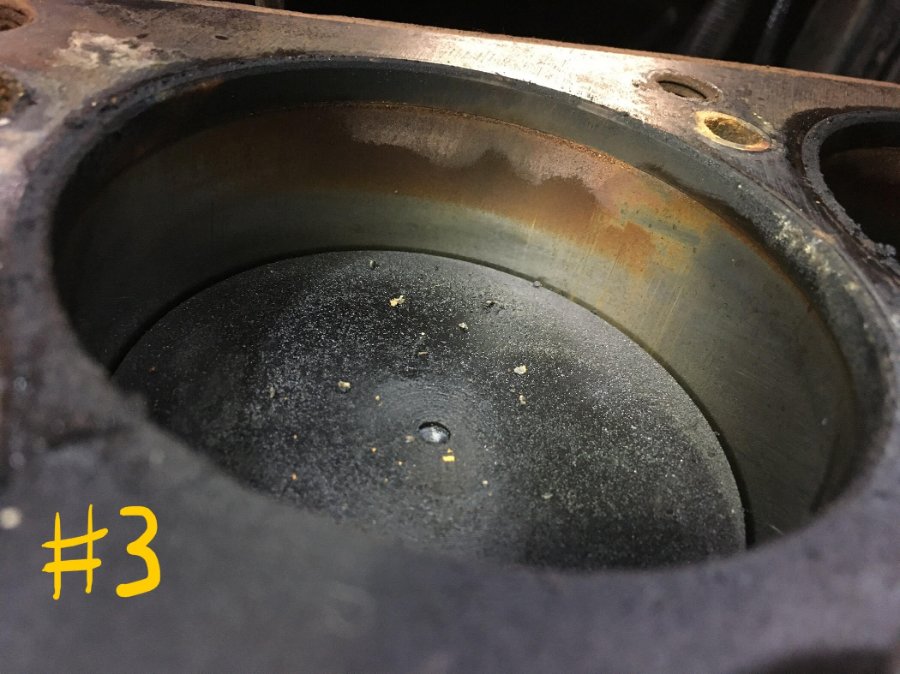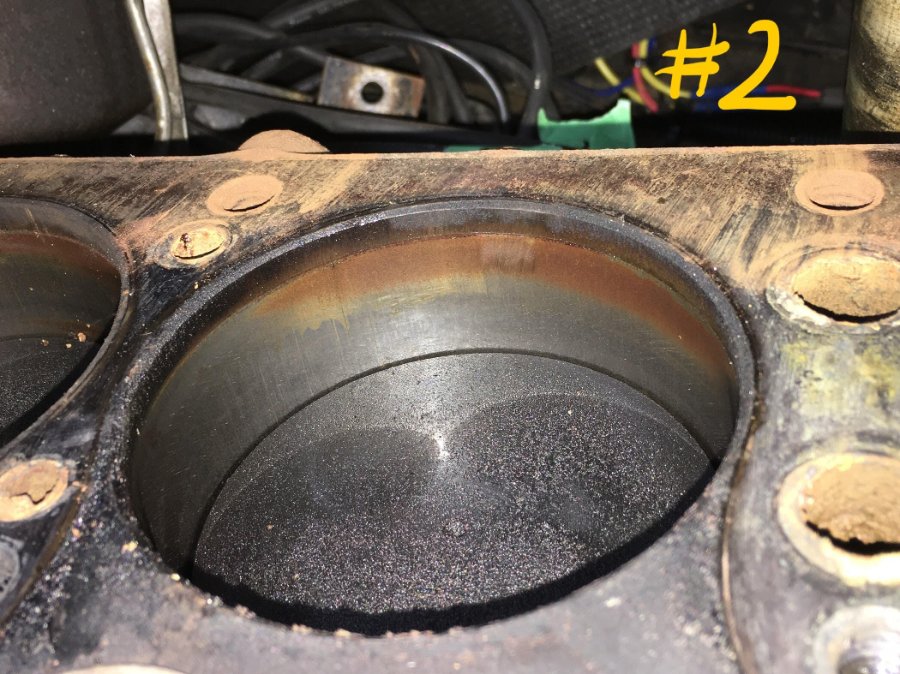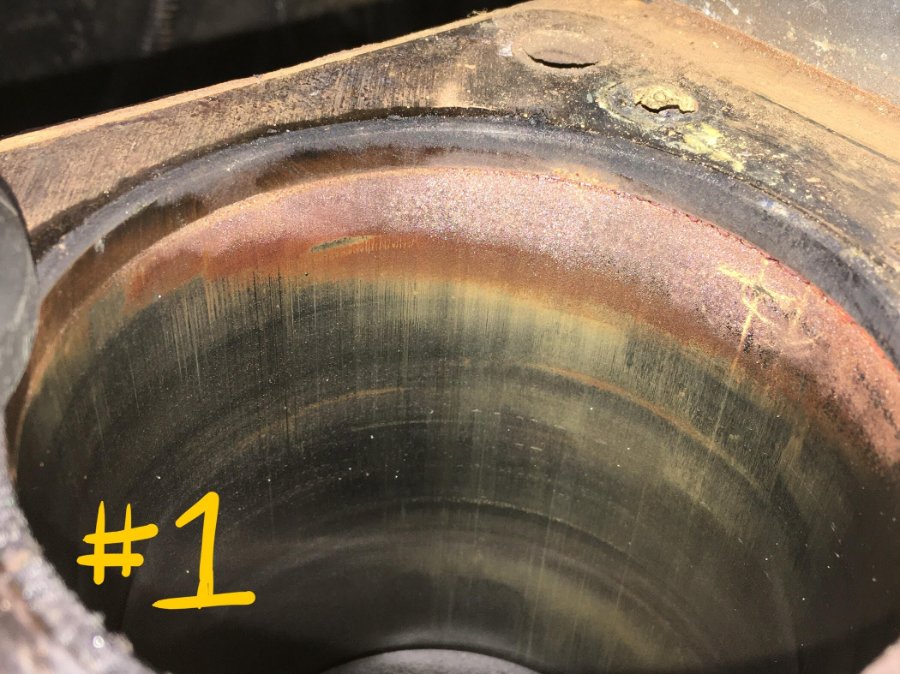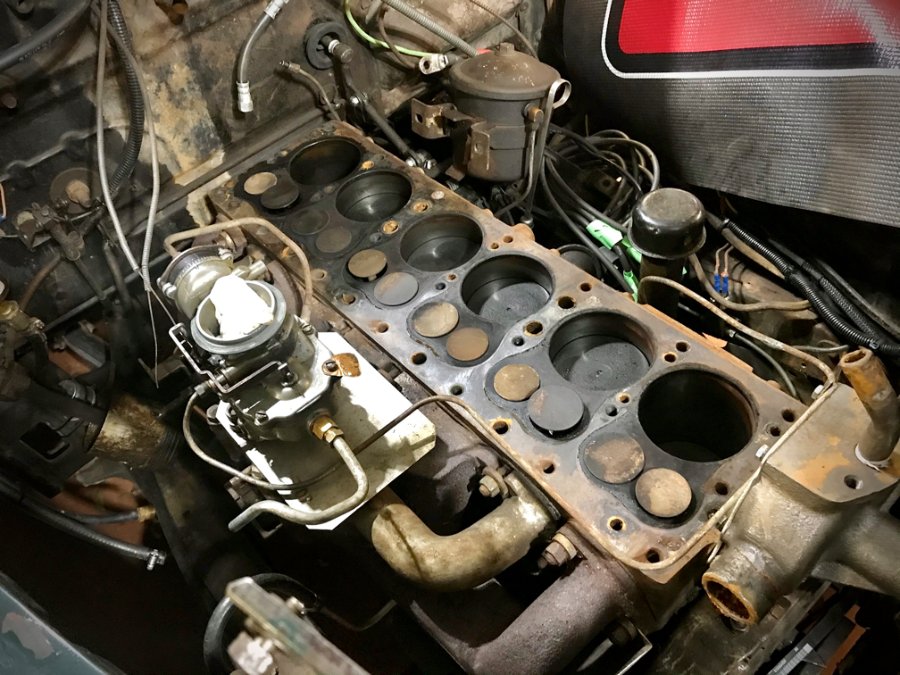-
Posts
3,466 -
Joined
-
Last visited
-
Days Won
193
Content Type
Links Directory
Profiles
Articles
Forums
Downloads
Store
Gallery
Blogs
Events
Everything posted by keithb7
-
Update: I pulled my 226 ci 25” engine today. The bare block shown above was removed from my engine stand. The almost complete, pulled 226 was installed on to the stand. It did better than I expected. I could push on it, shove it round. Everything stayed rigid and firm. I am happy with my stand. I paid $50 Canadian (about $35 US) for it used. It has a certification sticker on it. Claims to be rated for 1,000 lbs. I reminded today how heavy these old flathead motors are. Yowzers!
-
I hear ya. There are pros and cons to each option. I have tried those temporary shelters before. Canadian winters laugh the challenge. They often end up like a pile of pick-up-sticks . Retention and snow are the biggest factors each winter around here. Headed out now to seek out options...
-
2x4s are the same here. We still sell and price fruits and vegetables by the pound in the grocery store. $1.9/lb for grade AA apples. I have no idea why. Meat in the deli is priced per 100 grams. $1.99 per 100/g sounds a lot more enticing to buy than $19.99 per kilogram for sliced roast beef. You need a math degree to try and break down a grocery receipt. 2x4's, tarp and sandbags are a PITA. We get too much snow and wind. Then you have all this wood and scrap to deal with when I'm done with it. A decent cover seems quick, easy, no clean up. No dealing with too much snow. Jack it up. Pull the wheels. Cover it. Easy to bush snow off the car when I feel like it. A modern Grand Cherokee cover seems to be a pretty close fit. Maybe I'll try picking something up locally. Try it. Then it's easily returnable versus a custom fitting cover ordered from a web site.
-
I'll try. I am skeptical that I'll be able to reach anyone that has a clue. These days it seems to me most inquires go to a call centre overseas somewhere.
-
I am considering ordering a higher quality car cover for my '38 Plymouth. I've found some covers that claim to be pretty heavy duty for all types of weather. I normally keep my Plymouth in the garage. however I am doing some major engine work this winter. I would enjoy having the space to lay things out. Clean parts. Reassemble. Etc...I could roll my Plymouth outside and wrap it up in a decent cover for a few months, freeing up some garage space. That would sure be nice. My question is I can't seem to find a car cover specifically for my 1938 4 door sedan. The closest I can find is a 1938 Chrysler Royal. The cover would be a custom fit. The Chrysler body style is very close. The question I have is, would the Chrysler fitted cover be an ok fit on my Plymouth? According to some specs I can find, the Chrysler is a bigger car. Chrysler wheel base is 119". My Plymouth 112". The cover would be a little big I suspect. Might it be ok and work well on my Plymouth? Or flop around in the wind creating possible further paint wear? Most on-line sellers will specify 1938 Plymouth Road King, or 1938 Dodge Deluxe, for examples. They are't specifying if the model is a coupe or a sedan. I see a listing for a 1938 Plymouth Sedan Delivery. I suspect this is the Commercial delivery van type of body. Maybe that one will fit both a 5P sedan or the commercial delivery van? I believe the delivery vans were built on a truck chassis. I am hesitant to place any order. Do you have a suggested seller? With the right listing and proper fit for my '38 Plymouth? I've included some various photos of the mentioned models compared to my '38 P6. My Deluxe P6, then the Chrysler Royal, then the Commercial delivery van are shown here in that order. Thanks, Keith
-
Mine had a mostly assembled engine on it. I tore the engine down. Just the block on there now. I’ve been practicing my precision measuring on it. Very soon a complete 25” 228 engine will be on this stand. Will it hold up? We shall see. I think so. We’ll know soon enough.
-
Yes indeed, having the kids home and willing to go for cruises is awesome. Sadly they grow up and their time gets pulled in many directions. Relish every moment. These are the “Good old days with Dad”. Next thing you know they’ll be on their own. You’ll look back and wonder where the heck all the time went? You’ll be out cruising, singing along to Bruce Springsteen’s Glory Days...“They’ll pass you by. In the blink of a young mans eye.”
-
For the sake of more discussion around this topic: Here’s a photo of a piston from the spare 1949 CDN 218 3 ⅜” bore engine that I have. Top piston ring has multiple breaks. Is this fairly common? I suspect this occurs from excessive carbon build up in the behind and around the ring. Causing a tight squeeze and breakage? What causes excessive carbon build up, leading to broken rings? A poorly tuned engine. Incomplete burn if the A/F mixture. Crankcase oil entering into the cylinder. Poorly carbureted AF mixture. Improper valve clearance settings. Valve guide and valve seat wear. Piston ring wear. Improper warm up time before putting a load on the engine. Weak spark. Incorrect ignition timing. Low cylinder compression. Tapered or out of round cylinders. Worn rings, excessive end gap. There are seemingly endless opportunities to have excessive carbon building up in behind the top ring groove. Causing possible ring breakage.
-
Thank you @dpollo. Much appreciated. I was hoping That maybe looking for Canadian 218 rings might turn up results sooner than searching 228. What do you think about going 1/16 over to 3 7/16 bore. A More common size. Would the 3 7/16 pistons match up with my current con-rods? Any stress concerns?
-
I have been doing more research on this cylinder corrosion. I looked at some pistons removed from a 1949 218 ci Canadian engine that I pulled apart last year. It happens to also be a 3 3/8" bore. Pretty much exact same engine this 1953 228 ci engine except the stroke length. My 228 is 4 ¼" stroke, the 218 os 4 1/16" stroke. The 218 utilizes 4-ring pistons. I assume my 1953 228 does as well. I have not gotten that far into my 228 yet to verify. The used pistons I pulled out of the 218 have several broken top rings. I was told that the 218 was running when it was pulled. How good? Who knows. This makes sense that my 228 may also have broken top rings. I see that the corrosion is present in some cylinders but not all. The corrosion is mainly on the thrust side of the piston and cylinder. Straight across from the valves. Cylinders 4, 5, 6, have little to no corrosion present. If it were related to humidity in my garage, surely it would be present in all cylinders. Right? That half baked theory is out the window. If the top compression ring is broken, then the 2nd compression ring makes a pretty good back up. Right? Engine would still run pretty good and make half decent power and compression. If I choose to just hone and re-ring this engine I do need to ream the .010- 0.14 ridge off the top. Initially, I wondered why? The new rings would stop at the exact same location a where the old rings stopped. At the same ridge, right?...Well yes and no. The top piston ring and the cylinder are wearing in together. Perhaps a rounded edge has formed on the old piston rings. Nicely mirroring the cylinder wall wear. If a new ring, with a sharp nice squared edge on it is installed, and put into the cylinder, it could snag slightly on the top ridge. The ring could transfer immense energy into the the surrounding piston groove and crack the piston land, and likely the new ring too. A ridge reamer can be had pretty cheaply, and used at home. Then cleaned up with a little emery cloth. Next thought I had was ring gap. What if I used new .010" over sized rings and gapped/filed them myself? That could work. New rings would have to be gapped at the bottom of my cylinders as there is about .010 of cylinder wall taper. If gapped at the top, they would become too tight at the bottom. Again maybe breaking a ring. Interesting stuff. All just musings and ideas for me at this point. Sure is fun to learn about though! I can tell you that no matter what I end up doing with this engine, any money spent will have been very well spent on my education. Not on cigarettes, booze, gambling, or some other waste of time. LOL.
-
@Dodgeb4yaI performed a couple of compression tests. Most recent was in April this year. I was getting 90-100 across all. Very small difference between wet or dry. The car performed well all season. I put about 1575 miles on it in 2020 crusing season. Then I parked the car in early Oct. It's been sitting in the garage ever since. As the weather turned I have been using a propane fuel heater to heat up the garage. Propane heat is quite humid. The humid air perhaps created this light corrosion seen on the cylinder walls. When I took a piece of Scotch-brite to it, the rust easily came off. The raw steel on the cylinder walls could start to oxidize quite quickly I suspect. As seen in my photo above the cylinder wall cleaned up nicely. ...Just a theory. I do plan to slip out the pistons and inspect. The top compression ring could be worn and not sealing. Could be broken too, floating in its groove. We shall see. The temptation to bore over this current engine 1/16", from 3 ⅜" to 3 7/16" bore is nagging at me. This 4 1/4" stroke engine with a 3 7/16" bore would net me about 237 ci. Vintage Power Wagons sell 3 7/16" piston kits with rings for $185/set. Seems like a really good price. Would really wake up this little '38 car. Would there be any concerns with re-using the original con-rods, crank and related (if all test well) with the new 3 7/16" bore pistons?
-
Thanks for your experience @RobertKB. I am considering the route you describe. Sleeping dogs lie, yes I could have. I wanted to get in there and see what I really had. I wanted a rewarding winter project that would keep me busy and stimulated. It's too quiet, cold and dark around here all winter! The kids are gone. Covid has us locked up. I look forward to this. There are a few other issues with the engine that I need to deal with too. Replace all expansion plugs. One is weeping considerably. While the engine is out, flush out about 2-3" of rust scale that I discovered in the bottom of the block. Replace the rear seal and front motor mount. A couple worn valve guides. Lap all valves....It all sounds great until I expose more and more, the deeper I go.
-
Thanks for your comments @westaus29. I just came in from my shop. Measuring with a dial bore gauge. This block is definitely stock bore still. I get about .010 taper from top of cylinder to the bottom. Well beyond spec. Max taper in the shop manual for a new engine is 0.0015 Not quite what I'd hoped. Yet the learning experience for me has been awesome. Now I have to decide on my next steps. The engine ran pretty well before as mentioned. I'm not convinced yet to go full out and rebuild this engine with all necessary machining. Wondering if I could get away with a new set of rings. Hone the bores. Some new valve guides and lap the valves. A few other items. Probably get many more years out of it, fair weather cruising around town.
-
Using my dial bore gauge set to zero 3.375 I get 0 at the top, inside the top ridge. Dropping just below the ridge I measure about a 0.012 to 0.014 larger bore. I took a scotch-brite pad to the rust seen in the photos. It easily polished off and the bore looks much better. I guess I was just rust from humidity in the air in my garage. The engine hasn't run in 3 weeks. I recently began using a propane heater a little. Propane heat is humid. My guess is that is what happened to create the rust on my cylinder walls. #1 below.
-
-
-
#1 seems to have the most rust present. The scrape seen is from my fingernail. Almost looks like a crack near the top of the rust line. Just the edge of the rust I suspect. I had no symptoms that would lead me to believe this was a crack. The engine ran very well and made 95-100 psi dry or wet across all cylinders. I am quite interested to measure top compression ring gap to learn more.
-
Another pic from this morning...1 head bolt snapped off at removal. I'll drill and extract it soon when the engine is pulled and on a stand. Seems to me that cylinders 1, 2 and 6 had the most damp oily residue. Incidentally, those cylinder's exhaust valves also displayed the most valve guide or stem wear.
-
I do grasp valve guide wear. If your intake valve guide has wear, when it's open, the piston can draw misty crankcase air in around the valve stem, up the guide and into the cylinder. I believe this is especially present when the throttle valve is closed. The piston being forced down, is trying to suck in air. It can't get much through the closed off venturi. Vacuum created in the cylinder will pull air form anywhere. So at this point it can really draw air though any worn valve guides. Real world road conditions have this occurring when going down a hill. Car in gear. Gravity pulling the car down the hill. Drive wheels are forcing the crank around. Throttle valve is closed. Some blue smoke will often be seen out the tail pipe. When the road levels off, you hit the throttle open. A larger amount of blue smoke shoots out the exhaust. The smoke n cleans up and disappears. Under normal driving and acceleration, smoke may not be seen. Little, if any crankcase oil comes up the valve guides. Am I on the right track here? Valve guide wear, I assume can be a result of worn valve seat surfaces. Skewing the valve off of true vertical? Or possibly worn tappets or valve stem ends where they meet. Again, knocking the valve stem off true vertical. It starts out ever so slightly and compounds as items wear more and more. My question is, can misty crankcase air be drawn in to the cylinder by way of a worn exhaust valve guide? My suspicions are, not normally. Or maybe not a lot. If the exhaust valve is seated properly, and is sealed up, when the piston is sucking in air, the exhaust valve is closed. Air is not drawn in, past it. The exhaust valve is mainly open when spent gases are ejected out. There are some brief periods of valve overlap. New A/F is drawn in while the exhaust valve is still open. Perhaps crankcase air can be drawn in from the exhaust valve guide at his very time of overlap? Just not as much as a worn intake valve guide. I am digging into my 1938 228 ci 25" engine this winter. So far the head is off and I have felt some exhaust valve guide wear. I suspected this. Today my suspicions are confirmed. I also found some rust at the tops of the cylinders. Mainly the left side of the cylinders. Near the top, but down low enough, past the top rings. I would have thought 1500 miles this summer would have removed this rust. Not so it seems. Perhaps my top rings have excessive end gap, indicating wear. I wonder why this rust is not present on side of the cylinder right below the valves? Wet damp incoming air from a high humidity area where it lived and was driven over the past 80 years? Humid air with the engine sitting for decades with little use? Allowing for rust?
-
See you there next summer! http://www.nelsonkootenaylake.com/listing/pebble-beach Don't mind the snow...It all melts by 4th week in August. It ends up in the lake. Swimming is so nice and refreshing!
-
My original plug was screwed up pretty bad from various people trying incorrect tools to remove it. I took it down to the hardware store and matched up a external square drive plug. Easy to remove now. The judges at Pebble Beach will never see it. Works for me.
-
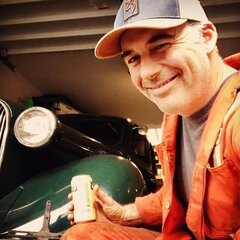
A fun afternoon out in my 1953 Windsor...A performance review.
keithb7 replied to keithb7's topic in P15-D24 Forum
Hi Pete. I use a free program that I downloaded on my Mac. It's called VideoPad Video Editor. Here is a link: https://www.nchsoftware.com/videopad/index.html You can download a Windows or Mac version for free and try it. I l have gotten pretty comfortable with it. The software is not hard to use. I only use the free options. It's enough to do what I want. The video editing and production is just a hobby. The software company wants $ to unlock it to use all the full features. I have not paid that. I see they offer a $5.50 per month, full version. I may try that for a few months. See how all the features work. On a related note I have had several people ask what I use to record my videos. Most of my recordings are done with an iphone. I also have a Go-Pro Hero camera. There are countless mounting options for Go-Pro cameras. I have one that can suction cup onto the various surfaces of my car. It allows me to record interesting, cool angles of the car. I also have a head mount. Then the Go-Pro is up on my forehead. I can use both my hands to work, talk and illustrate my topic. It's pretty handy. -
A large portion of us on here seem to live in massive countries. Examples include USA, Canada & Australia. Surely there are indeed many, many places we have not seen right here in our own back yards. I have been fortunate to visit the farthest east and west corners of North America. In both Canada and the USA. However there are a ton of rivers, lakes, mountains, prairies, valleys, and more, left to see between the two coast lines that I have never seen. I will be venturing further in my home country next year. There are so many places I still want to see in the USA and Canada. Until things settle down, my USA destinations will have to wait. When some of us travel, sometimes we are looking for a different cultural experience. In these big countries, indeed there are distinct differences in culture and language. Right here in our own country. Canadians, if you have not been, the Maritimes is certainly more than a little different. Newfoundland is more like a foreign country still in the 70s' in many ways. And that's a good thing! Quebec is certainly quaint and distinctly different. Although I have visited different areas of Quebec, I have yet to visit Quebec City. The Citadel and Old Quebec is indeed on my bucket list. How about a language barrier? Quebec, Newfoundland and Boston will leave you scratching your head trying to order a coffee. An American or Canadian west coaster is indeed in-for an unforgettable experience when visiting their country's east coast. Boston, NYC, Rhode Island and Cape Cod left a lasting impression I will never forget. Hush puppies in Rayleigh NC are worth trying when you are in the area checking out Nag's Head. Ranking right up there with some of my most memorable places to visit ,the eastern USA was so very hospitable...."Wherey'allwunnabeesat?" was repeated 3X (very quickly) by southern waiter at a restaurant in South Carolina. I still could not comprehend what he was saying, as he led us to an empty table for dinner. I've not thought about a 2021 summer trip anywhere yet. I sure hope things improve by then. Perhaps if I head out on the open road, I can meet up with a few members here. I'd really enjoy seeing some other old Mopars. In person. There seems to be little to none around here in my town.
-
Best bet is to seek out a used old dwell meter on your local on-line classifieds. Perhaps a swap meet some day in the distant future when they can have them again. They are cheap, (majority of people have no clue how to use one anymore) and in low demand. A great tool to have to keep your old Mopar well tuned up! I'm am quite pleased with my old 70's dwell meter.
-
After I’ve bent over a fender for a few hours, I sometimes think that might be how my back will feel everyday at 70!


